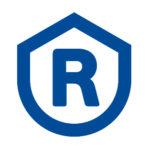How to start investigating an indoor air problem in a housing company?
Due to the current exceptional circumstances, people spend more time at home, and many property managers have heard that the residents of the housing companies they manage have noticed darker areas on the walls or are experiencing symptoms. These are signs indicating an indoor air problem, but how should you start investigating such a problem in a housing company?
Indoor air problem investigation process in a housing company
An investigation into indoor air quality starts with a problem. Typical signs of an indoor air problem in an apartment building include abnormal odours or signs of humidity damage. Residents having symptoms is also a clear sign of an indoor air problem.
The investigation of an indoor air problem should be started by determining the extent of the indoor air problem using non-destructive methods. A needs assessment is a survey based on initial data where the condition of the apartment(s) in which the problem was detected or the structures in the entire building and building technology are assessed visually to provide an assessment of the suitability of different research methods for the property. The survey starts with an interview with the representative of the housing company and ends with the submission of a written report which sets out recommended measures and further research needs.
“Indoor air problems in a housing company are usually very complex, so the significance of groundwork in resolving the problems cannot be overemphasised. A careful needs assessment provides the basis for effective repairs or further surveys that will save time and money,” says Aki Puhka, a senior indoor air specialist.
Further surveys to eliminate the indoor air problem
If the needs assessment reveals that the indoor air problem is extensive and cannot be eliminated without surveying some structures, the expert will recommend further surveys. The content of a humidity and indoor air survey largely depends on the problem at hand. The survey often includes taking various measurements from the indoor air, opening structures, taking samples and studying the functionality of the ventilation system. Raksystems’ technical humidity and indoor air condition surveys are performed in compliance with the Guideline on Technical Humidity and Indoor Air Surveys for Buildings (Rakennuksen kosteus- ja sisäilmatekninen kuntotutkimus in Ympäristöopas 2016 by the Ministry of the Environment).
Once the necessary surveys have been carried out and the problem has been identified, a repair plan will be drawn up for the housing company and the corrective measures will be performed. It is also recommended to have an external expert monitor the progress of the corrective measures. If the repairs are not carried out properly, the indoor air problem may even get worse.
“Prevention of an indoor air problem is a matter of keeping the housing company in good condition and eliminating the problem as quickly as possible. This way, the property and the health of the residents can be protected before the problem can cause more serious harm,” Puhka continues.
Division of responsibilities in a housing company when resolving indoor air problems
As a rule, the responsibility for solving an indoor air problem lies with the housing company. The housing company is responsible for the building’s structures and systems, while the shareholders are responsible for the interior surfaces of their apartments.
Without a permission from the housing company, a shareholder can only place orders for surveys that use non-destructive methods. This is what often happens if the representative of the housing company, i.e. the property manager, fails to take action despite the shareholders experiencing symptoms indicating an indoor air problem. In many cases, the property manager will take the issue more seriously when an expert’s report about the indoor air problem is presented to them.
If a shareholder detects problems with the housing company’s indoor air, they must always report their findings to the representative of the housing company. The shareholder has a duty to notify, and a failure to do so may lead to liability for damages. If the shareholder does not report the problem to the housing company and the problem gets worse, the shareholder may be obligated to pay for the repairs.



